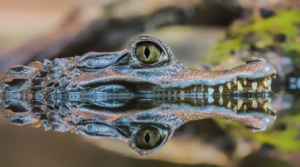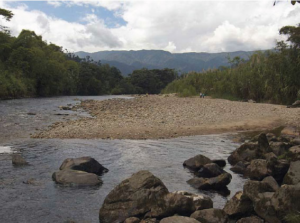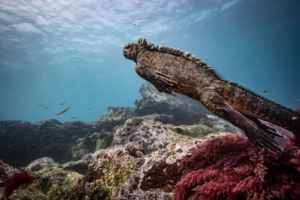Ecuador is a fascinating destination, characterized not only by its biodiversity, but you can also appreciate the ancestral culture that is evident in each place. Approximately 1 hour and 30 minutes from the city of Cuenca, the Ingapirca archaeological complex stands, the ruins belong to what was once the fortress of the Inca civilization, this space was used as an astronomical observatory. In the archaeological ruins there is a journey through the Ecuadorian Austro combining history and magic. The Incas created an impressive system of trails that at the time connected Quito with Talca in southern Chile. Tourists can walk part of this ancient Inca Trail.
Did you know that ingapirca is a Kichwa word that means “wall or wall of the Inca”, it is located at 3,160 meters above sea level, inside a unique natural landscape. Nestled in a basin of cold and seasonal climate constantly swept by the wind that runs through the southern mountain range of Ecuador. This construction is a magnificent sample of what the Cañari-Inca culture was. It has an area of four hectares and was an important religious, political, scientific, military and administrative center during the Inca conquest.
In the archaeological complex, the temple of the sun or castle stands out, considered as the main nucleus of the place. In addition, this temple has an oval platform unlike the rest of the settlements that are arranged in circular shapes.
Ingapirca concentrated the Cañari culture (500 AD) and united various cultures through the Tahuantinsuyo and became, like Machu Picchu in Cuzco (Peru), symbols of the power of the Inca civilization.
The story tells that the Inca Túpac Yupanqui, during the expansion campaigns of his empire through southern Ecuador, met the Cañari tribe “Hatun Cañar” and strategically married the Cañari princess Paccha, from whose union Huayna Cápac was born. in the city of Pumapungo, current Cuenca. The Cañari people built this complex for themselves and although the Incas were more numerous and dominated the Cañari, they did not demand that they renounce their autonomy and kept their separate individual customs, thus resolving their differences to live together peacefully and merge their civilizations. The religions of the Incas and the Cañaris were very different: the former worshiped the sun, while the latter worshiped the moon. Although the city is laid out in the shape of a cougar, the complex reflects the crescent. As a place of worship that it was, numerous ritual celebrations were held there. Supposedly, large quantities of a fermented drink called chicha were used in these festivities.
The Ingapirca archaeological complex is home to the Face of the Inca. This rock formation is said to be the reason why the Incas chose this particular site to build their famous Temple of the Sun. They apparently believed that the Face of the Inca would watch over them and protect them from harm.
The rock face is visible from the temple and can be reached by a short walk from the ruins. The great similarity of the rock with the human face will amaze you.
Upon entering we begin the tour with a guide, walking along marked paths so that we all follow the same circuit.
The first stop is Pilaloma, an area belonging to the Cañaris, where the construction system they applied is evident. The use of river stone and “quiyujaca” stands out, a special glue that they used as cement (quiyu means yellow, and jackfruit, mud). It is because of these materials that it is determined that the first tomb that we visited in the complex belongs to the Cañari culture, since the stones are from the river. In this tomb they found 11 skeletons. Among them, that of a woman who seems to have been an important priestess and who was buried along with her ten servants. The shape of the tomb is circular, representing the God of the Cañaris, the moon. Also, you can see a large stone with holes, used as a calendar. There are 28 holes that were filled in times of rain, in whose reflection the Cañaris saw the stars, the sun and the moon, and thus interpreted what was the best time to harvest or sow. It is speculated that it also served as a calendar for reproduction, since it has 28 holes, the same as the days of a woman’s period. This theory is based on the belief that when the land is fertile, women are too, because the land is a female part.
The ritual baths are an important part of the complex. To access the main area you had to do it through these baths, to purify the soul. Upon reaching them, in the front area, two half circles can be seen from which, being in the Cañari area, the Inca space can be seen. The tour advances, the Cañari culture is left behind while the Inca culture gains presence. We approach the construction that caught our attention from the moment we entered, and it is the reason why these ruins stand out from others: the Temple of the Sun. We arrive at the stone cemetery, where we can appreciate first-hand the work of carved that the Incas did so that each stone fits perfectly with the other.
Finally, and as the last stop of the tour, we ascend to the most sacred sector of the complex: the Temple of the Sun, the highest point of worship, which had two false doors and a main door. Upstairs, two rooms built in such a way that the sun could be seen rising in the east and disappearing in the west. Sacred, for being a place where the Incas were always in contact with their God.
The Cañari civilization used different burial systems and rites. The stone in this photo shows tints of a Puma’s shadow during the solstice. Influenced by the Incas, they had houses similar in shape to those of Machu Pichu, but which are mainly terracotta buildings, as opposed to those in Peru, which are built of rocks.
Within the complex you can see some small stone walls surely carved in the same place, they form some geometric figures such as the rectangle, square oval, even if you pay attention you will be able to recognize animal figures that are in relief.
Additionally, some aqueducts can be distinguished, which must have served to lead the water to the baths where they had an entrance and an exit.




